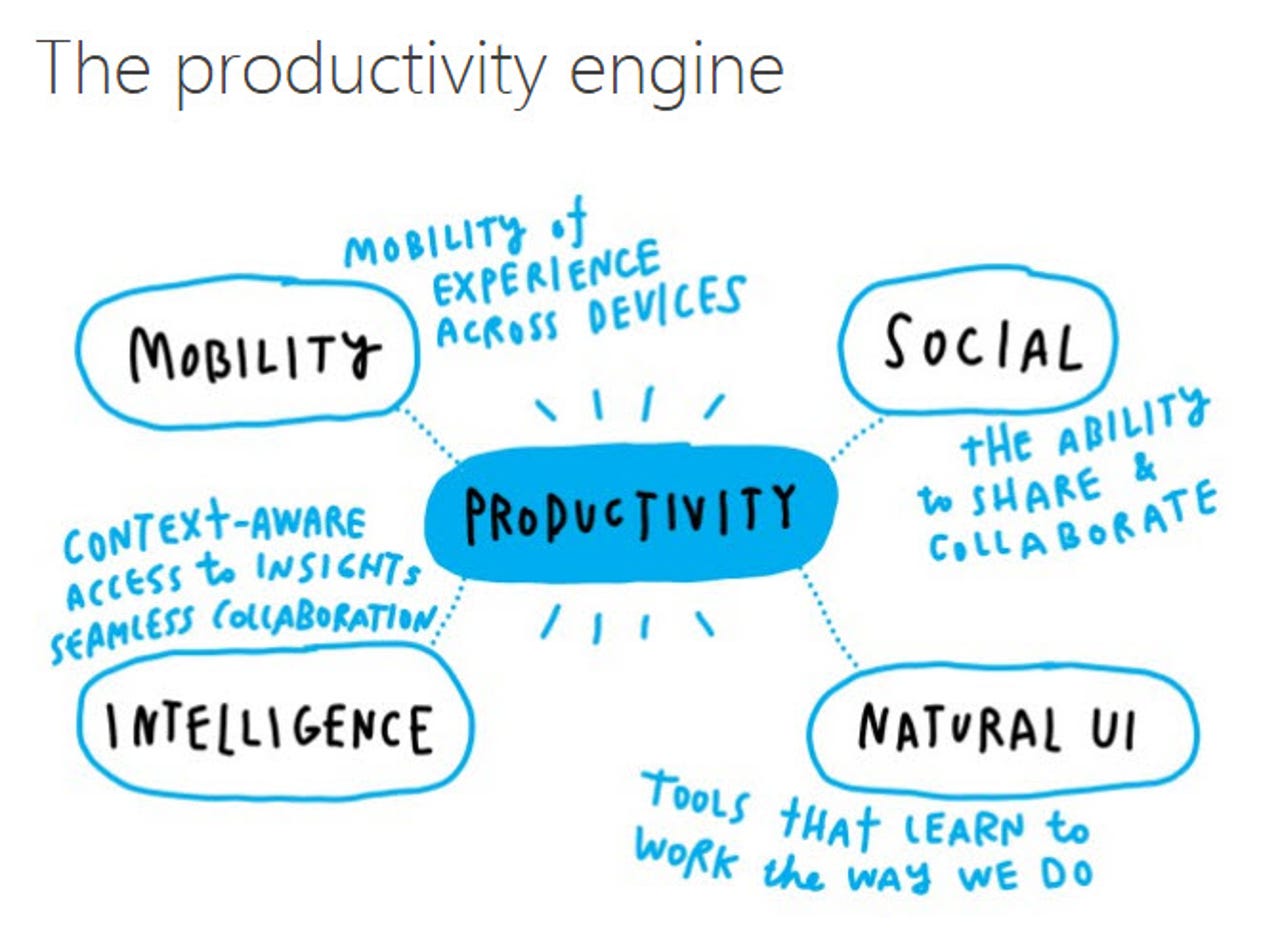Microsoft pushes ahead with its quest to make apps more intelligent

Continuing its quest to broaden the commonly accepted notion of "productivity," Microsoft is rolling out more applications that embed intelligence inside.

Last year, one Microsoft exec showed off a prototype of what email could look like in the future if it were to embed contextual information supplied by Bing on the back-end. A "Bingified" version of Outlook could allow users to see entity information right inside their e-mail. The same way that Microsoft Office apps currently alert users with a squiggly line to a potentially misspelled word, a Bing-enriched mail app could show users information about entities embedded in their e-mail messages -- things like bands, venues, nearby restaurants and more.
It sounds like Microsoft is continuing its efforts on this front. Last week, at a private press event, Microsoft showed off a coming Windows phone app called "Revolve," according to Fast Company. That app "melds aspects of a calendar and contact manager, and presents you with information about people you’re going to meet with that it’s collected from multiple sources."
(I've asked company officials for more information as to when Revolve may roll out in preview or final form and if/when it will come to other mobile platforms. No word back so far.)
Update: Revolve is actually not a Windows phone app. It is an iOS app that is in very early stages of internal testing, a Microsoft spokesperson said. It is one of the apps to come out of the Microsoft Garage incubator and ultimately may be released on other mobile platforms, the spokesperson added.
Microsoft's Applications and Services Group (ASG), headed by Executive Vice President Qi Lu, is the part of the company leading the so-called "Digital Life + Work" charge for the company.
According to a job posting on the Microsoft Careers site, Microsoft is building a Digital Life + Work experience "substrate" which "understands context and reacts to changes in the world, proactively providing critical information at the right time and place." The mission of the team that is surfacing substrate information is to "bring people back to four hub services: OneDrive, OneNote, Outlook.com and Skype."
Those four hub services parallel the four new groups created in ASG earlier this year. The four: A combined OneDrive/OneDrive for Business/SharePoint team; a OneNote team; a combined Exchange/Outlook/Outlook.com team; and a combined Skype/Lync team.
ASG isn't operating in a vacuum, in terms of evolving Microsoft's defiition of productivity. The Operating Systems Group team also is working on part of the vision via the mobile connectivity team. That team is building what Microsoft is calling OneSync, "the unified stack that supports the device platform needs of Outlook for the synchronization of People, Email, Calendar and Tasks," according to another job posting.
The "Bingification" of apps is enabled by the incorporation of what the company is calling "understanding services" into various apps. These understanding services include Cortana, which contributes the conversation/user intent; Bing Index (Web/user intent), Satori (entity) and Ads (advertiser intent). Satori, for those needing a refresher, is the knowledge repository inside Bing.
Microsoft execs are touting Microsoft's new Sway aggregation and presentation app as another example of the way the company is expanding the definition of productivity. Sway also incorporates machine-learning intelligence and has hooks into OneDrive.
Earlier this year, Microsoft CEO Satya Nadella announced that Microsoft would be focusing on productivity and platforms in a cloud-first, mobile-first world, moving forward, hence the work to broaden and redefine the productivity category. Nadella vowed that Microsoft would "reinvent productivity as part of its evolving charter.